![]()
![]()
![]()
Use LEFT and RIGHT arrow keys to navigate between flashcards;
Use UP and DOWN arrow keys to flip the card;
H to show hint;
A reads text to speech;
48 Cards in this Set
- Front
- Back
|
What percent of Earth's land surface is covered by arid landscapes?
|
26% |
|
|
What percent of Earth's land surface is covered by semi-arid and arid landscapes? |
35% |
|
|
What are Hadley cells and why do they produce dry areas? |
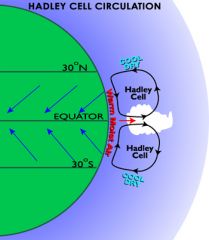
|
|
|
Why are places in the Lee of Mountain ranges dry? |
|
|
|
Why are continental interiors dry? |
|
|
|
Wind Action In Deserts
Why is wind important in deserts? |
Simply because there is little water. |
|
|
Wind Action In Deserts
Why is wind common in arid desert regions?
|
|
|
|
Wind Action In Deserts
Water is a much more powerful agent of landscape formation, but in its absence, even weak agents such as the __________ become significant. |
Water is a much more powerful agent of landscape formation, but in its absence, even weak agents such as the wind become significant. |
|
|
Wind Action In Deserts
The __________ is a fluid, like __________ only much less dense. |
The atmosphere is a fluid, like water only much less dense. |
|
|
Wind Action In Deserts
Wind has the ability to…? |
Transport Erode Deposit Sediment
Note: These processes are a lot like the ones you'll find in rivers. |
|
|
Wind Action Deserts - Transportation Process
What are the three processes of transportation by wind? |
|
|
|
Wind Action Deserts - Transportation Process
Define: Surface Creep (large particles) |
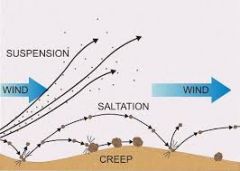
|
|
|
Wind Action Deserts - Transportation Process
Define: Saltation (medium particles) |
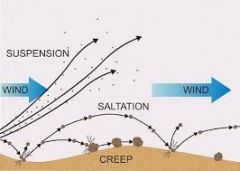
|
|
|
Wind Action Deserts - Transportation Process
Define: Suspension (smallest particles) |
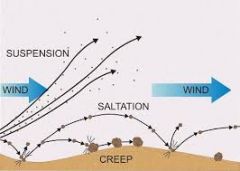
|
|
|
Wind Action In Deserts - Erosion Process
What are the two ways wind can erode? |
|
|
|
Wind Action In Deserts - Erosion Process
Define: Deflation |
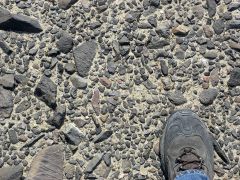
|
|
|
Wind Action In Deserts - Erosion Process
Define: Abrasion |
|
|
|
Wind Action In Deserts - Erosion Process
What are two formations Abrasion can make? |
|
|
|
Wind Action Deserts - Erosion Abrasion Process
Define: Ventifacts |
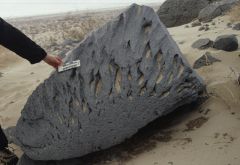
|
|
|
Wind Action Deserts - Erosion Abrasion Process
Define: Yardangs |
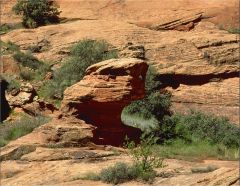
|
|
|
Wind Action Deserts - Deposition Process
What are two formations Deposition can make? |
|
|
|
Wind Action Deserts - Deposition Process
Define: Sand Ripples |
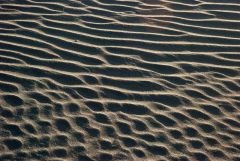
|
|
|
Wind Action Deserts - Deposition Process
Define: Sand Dunes |
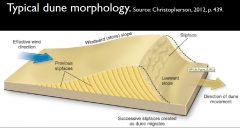
|
|
|
Wind Action Deserts - Deposition Process
Define: Slipface |
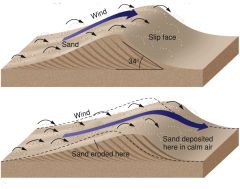
|
|
|
Wind Action Deserts - Deposition Process
Define: Angle of Repose |
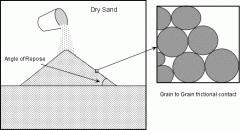
|
|
|
Wind Action Deserts - Deposition Process
What are three different types of sand dunes? |
|
|
|
Wind Action Deserts - Deposition Process
How do dunes migrate? |
|
|
|
Wind Action Deserts - Deposition Process Three General Types of Dunes 1/3
Define: Crescentic (Dune Type) |
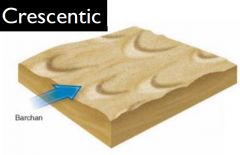
Note: Also called Barchan Dunes
|
|
|
Wind Action Deserts - Deposition Process Three General Types of Dunes 1/3
Where do Crescentic Dunes form?
|
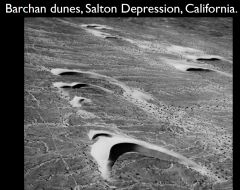
|
|
|
Wind Action Deserts - Deposition Process Three General Types of Dunes 2/3
Define: Linear (Dune Type) |

|
|
|
Wind Action Deserts - Deposition Process Three General Types of Dunes 2/3
Where do Linear Dunes form? |
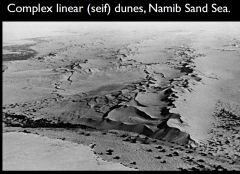
|
|
|
Wind Action Deserts - Deposition Process Three General Types of Dunes 3/3
Define: Star (Dune Type) |

|
|
|
Wind Action Deserts - Deposition Process Three General Types of Dunes 3/3
Where do Star Dunes form? |
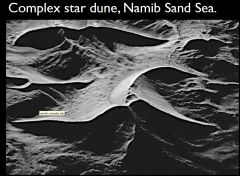
|
|
|
Desert Atmosphere Processes
Define: Wind Action |
|
|
|
Wind Action Deserts - Deposition Process
Large accumulations of sand are not common in the deserts, but when encountered are known as __________? |
Ergs (sand seas) |
|
|
Wind Action Deserts - Deposition Process
Define: Ergs (sand seas) |
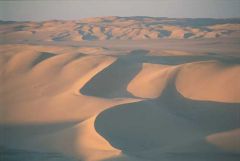
|
|
|
Wind Action Deserts - Deposition Process
__________ action is also responsible for deposition of very fine particles at times in the past. These large deposits are known as _________ deposits, and make fertile farmland. |
Wind then Loess |
|
|
Wind Action Deserts - Deposition Process
Define: Loess Deposits |
|
|
|
Desert Fluvial Features
What can the presence of water produce in the desert? |
Remember: Water is a far more effective agent of landscape formation than wind is. |
|
|
Desert Fluvial Features
Although it does not rain often in the desert... |
...When it does rain, it usually rains hard. |
|
|
Deserts - Fluvial Features
What are the four desert fluvial features? |
|
|
|
Desert Fluvial Features Produced by Water
Define: Wadis/Arroyos |
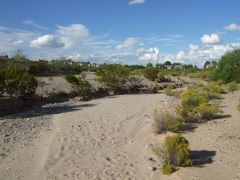
|
|
|
Desert Fluvial Features Produced by Water
Define: Alluvial Fans |

|
|
|
Desert Fluvial Features Produced by Water
Define: Playas |
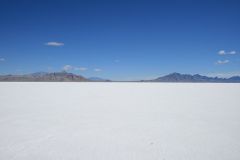
Example: Bonneville Salt Flats
|
|
|
Differential Erosion
Define: Differential Erosion |
|
|
|
Differential Erosion
Define: Balanced Rocks (Hoodoos) |
|
|
|
Differential Erosion: Example 1
Picture of Balanced Rocks (Hoodoos) in Goblin Valley State Park.
(similar can be found in Arches National Park) |
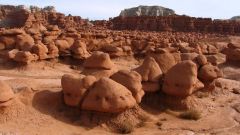
|
|
|
Differential Erosion: Example 2
Picture of Monument Valley's Buttes |
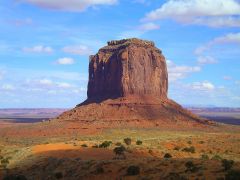
|

